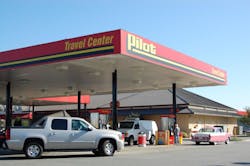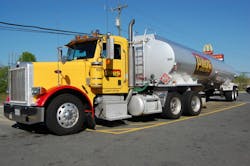There’s been a lot of debate recently about blending higher levels of ethanol with gasoline, not in the least revolving around how higher levels of ethanol could affect older model engine components.
One interesting trend the Energy Information Administration (EIA) recently noted, though, is how ethanol is affecting the “price spread” between different blends of gasoline.First, a little background: Over the last decade or so ethanol became a critical component of gasoline, replacing the controversial methyl tertiary-butyl ether (MTBE) as a way to help lower emissions. Yet ethanol also provided refiners with what EIA calls a “considerable source” of octane, for the higher a gasoline fuel’s octane rating, the better it can resist ignition at high compression rates.
That’s an important characteristic in reducing engine “knocking,” which can lead to excessive engine wear, the agency noted.
Ethanol, when blended into gasoline, obtains an average octane rating of 115, EIA said – significantly higher than the gasoline octane rating at retail stations for regular (87 octane) and premium (91 to 93 octane) gasoline.
As a result, refineries have been able to decrease the octane level of gasoline blendstock, with the Environmental Protection Agency (EPA) estimating that refineries can now produce 84 octane blendstock that, when blended with ethanol, will meet the 87 octane minimum for regular-grade gasoline, and produce 88 octane blendstock that will meet a 91 octane premium-grade finished gasoline requirement after blending.What does that mean for gasoline-powered vehicles? EIA puts it this way: For a refiner, there is a tradeoff between octane levels and volume of gasoline produced as higher levels of octane reduce production volume, raising the relative price of higher octane fuels.
Yet this tradeoff is not "linear," the EIA said, meaning production declines more rapidly as octane increases. As a result, more cost savings result from reducing octane levels for premium gasoline blendstock (91 octane to 88) than from reducing the already lower regular gasoline blendstock octane levels (87 to 84).
Thus as the percentage of ethanol in gasoline grows, the agency explained, higher octane blendstock should become relatively cheaper, reducing the percentage-based grade differential for premium versus regular gasoline.
The EIA noted that, with the exception of a price spike in late 2008, the percentage spread between premium and regular-grade gasoline fell fairly steadily from 17% in 2001 to a low of 6% in early due to increased blending of ethanol into the motor gasoline pool.
Yet will more ethanol really help reduce that price disparity further? Maybe ... and maybe not. Indeed, the difference between the U.S. average retail price for premium and regular gasoline— the “premium for premium” in EIA’s words — reached 30 cents per gallon for the first time at the end of 2012 and has remained there thus far in 2013.
Will more ethanol blended into gasoline change that spread? More importantly, could more ethanol help lower gasoline prices overall? Those are two very big unanswered questions.


